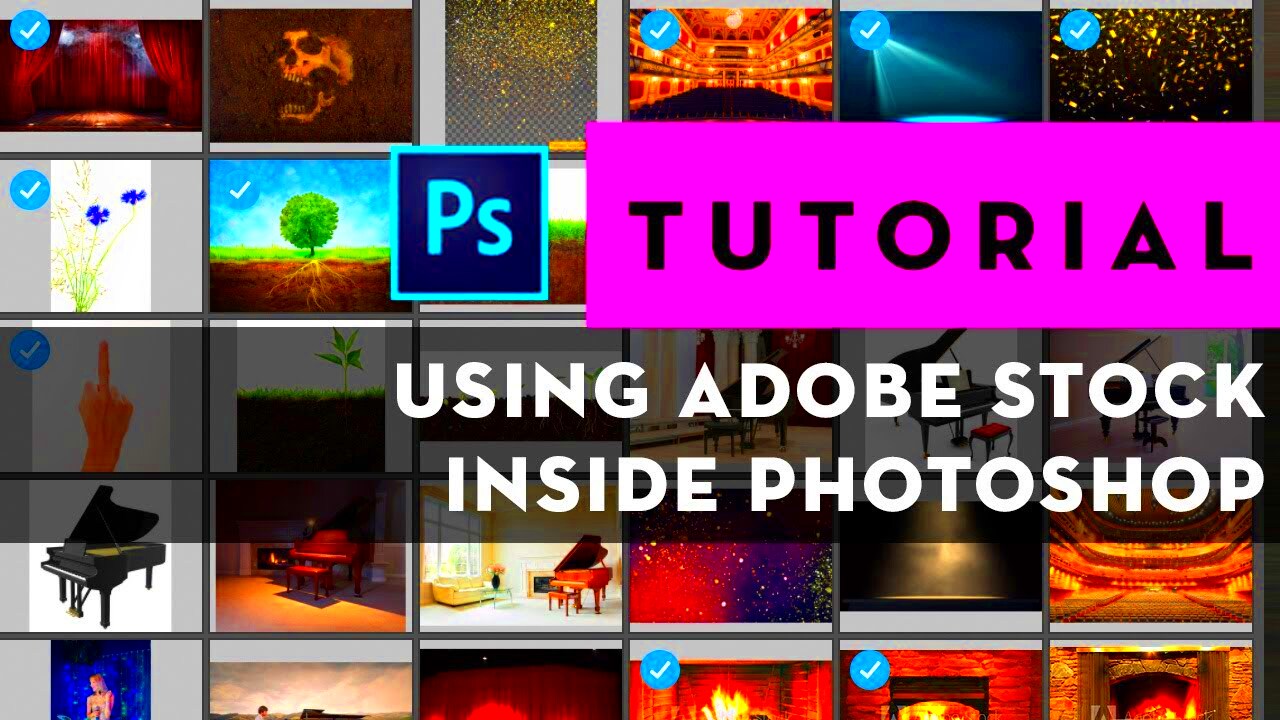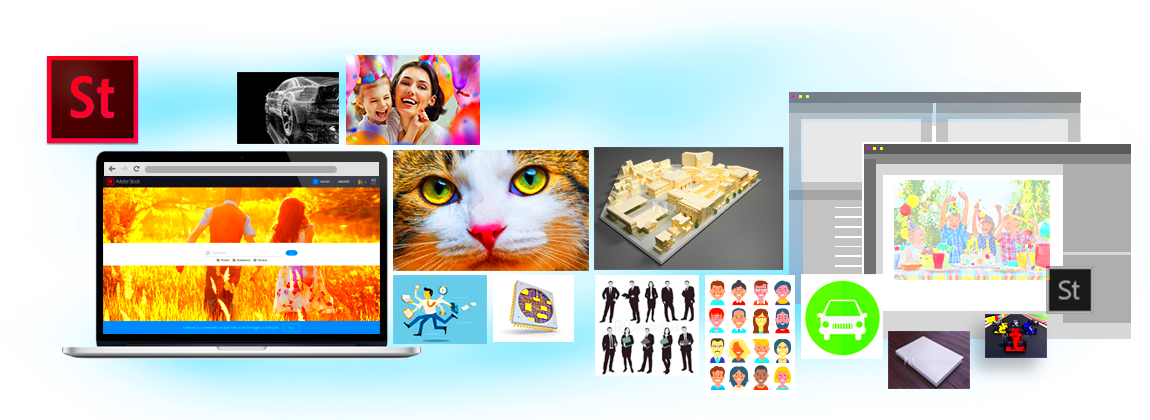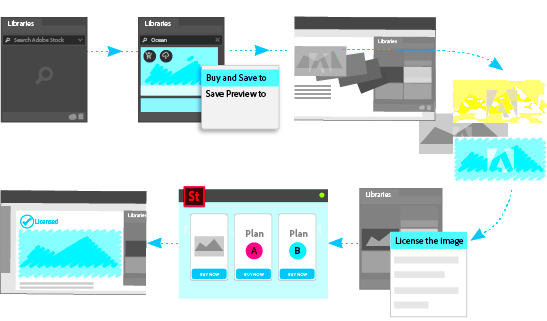Adobe Stock and Photoshop are like spices that form a perfect blend in a well-cooked curry. With my countless hours of experience in photo editing and design, this integration is indeed a transformation. It simplifies the workflow and offers a storehouse of quality images at the designer’s workplace. Imagine flipping through thousands of beautiful images while already deep into your creative process. That is what makes the union delightful.
Setting Up Adobe Stock in Photoshop

Hormones are a complex and fascinating subject to study, often leaving experts puzzled by how they regulate processes in our bodies. When depicted on a graph, they resemble sinusoids (with peaks and troughs) that never settle down in one place.Some points are common among all of them: hormones circulate through the bloodstream; their levels must be carefully regulated by complicated interrelationships along with other substances, for instance neurotransmitters or growth factors; signaling molecules can work at very low concentrations. Now let’s take another look at some important examples of hormones related functions and reactants.
To begin with let’s understand what do hormones do?Hormone action involves binding to cell surface receptors previously identified via adventitious methods (as opposed to binding to intracellular receptors). This section contains more information about specific effects of major classes of hormones across time scales ranging from seconds (catecholamines) to months or years (steroids). One can observe many different processes triggered by hormones during this time period: metabolism regulation, blood pressure control, immune system modulation and others!Getting into it is as simple as enjoying a cup of chai on a rainy day. Make sure you have an
Adobe Stock account and Adobe Photoshop installed in your machine to kick off with. Quick guide on how it’s done:
- Open Photoshop: Launch the software and head to the “Window” menu.
- Access the Libraries Panel: Click on “Libraries” to open the panel.
- Sign In: If you’re not signed in, do so using your Adobe ID.
- Explore Adobe Stock: Click on the “+” icon to add Adobe Stock and begin browsing.
Before long, you will be able to obtain millions of pictures your project may need. Just think of it as having an artisanal shop within your very own abode!
Searching for Images Easily in Photoshop

Once everything is ready to go, searching for pictures becomes an easy task. It feels like viewing your beloved picture book. The following are some tips on how to look for an ideal photo:
- Use Keywords: Think about what you need. Type relevant keywords into the search bar. For instance, if you need a sunset, just type “sunset”!
- Filter Your Search: Use filters to narrow down your choices. You can choose between orientation, color, and even image type.
- Preview Images: Hover over an image to see a preview. This gives you a quick look without committing.
The entire process of looking for the perfect image must be as simple as the times when creative ideas come when one is least expecting them. Believe me, once you have tried this easy way of searching, you will be left wondering how you were ever able to do without it!
Downloading and Importing Images from Adobe Stock

Astral Stock has a good way of downloading pictures. You can see it as a present which is in a beautiful package and you have been expecting it for a long time. Finding that desired image is very simple and fast after all. The process is as follows:
- Choose Your Image: After browsing, click on the image you love. A new window will pop up, showing more details.
- Select Your License: Decide whether you want a standard or extended license. This depends on how you plan to use the image. For example, if it’s for commercial use, go for the extended license.
- Download: Click on the download button. The image will be saved directly to your computer, ready to be imported into Photoshop.
- Import to Photoshop: Open Photoshop, navigate to “File,” and select “Open” to bring in your new asset.
Every time I go for an image download, there is always a sense of satisfaction akin to accomplishing something in a video game. It’s this feeling that makes me continue being creative!
Using Adobe Stock Images in Your Projects
Once you have your photos, it’s time to unleash your creativity. When you use
Adobe Stock images in your projects, it can really change the way you work. Here are some tips on how to utilize these visuals effectively:
- Enhance Your Designs: Incorporate images as backgrounds, overlays, or main subjects. It’s amazing how a well-chosen image can elevate a simple design into something stunning.
- Customize Your Images: Don’t be afraid to edit! Use filters, adjustments, or blend modes to match the image with your style. It’s like adding your personal touch to a delicious dish.
- Maintain Consistency: If you’re working on a series, stick to a color palette or theme to create a cohesive look.
Based on my experience, blending
Adobe Stock images with original material can result in stunning outcomes. It’s similar to combining various tastes in order to make a tasty meal!
Managing Your Adobe Stock Assets
Managing growing
Adobe Stock image collections is inevitably important. Like arranging spices in one’s kitchen, tracking assets can be a great time and stress saver. Here’s what you need to know about management of these images effectively:
- Create Folders: Organize images by categories, such as “Landscapes,” “Portraits,” or “Textures.” This makes it easy to find what you need.
- Use the Favorites Feature: Mark images you love by adding them to your favorites. This way, you can quickly access them when inspiration strikes.
- Keep Track of Licensing: Make sure to document which images you’ve licensed, especially for commercial projects. This helps avoid any future legal hiccups.
Though it may not seem like it, managing your assets is an essential action for any artist. A little organization will allow you to spend less time looking for things, and more time creating!
Troubleshooting Common Issues with Adobe Stock
We’ve all been there before: you are deeply immersed in the creative process, when all of a sudden Adobe Stock hits you with one obstacle or another. It’s as if someone had blown out a candle in front of me only to find that I was already starting an enjoyable roundtrip ride through the dark countryside. In case something goes wrong, remember that most problems have easy fixes. In case, you wonder how this is done let me tell you about short ways to handle your mistakes from my practice and other artists’:
- Image Not Downloading: If you find that images aren’t downloading, check your internet connection first. A stable connection is crucial. If that’s fine, try logging out and back in to refresh the session.
- Search Results Not Appearing: Sometimes, it feels like the search function has a mind of its own. If images aren’t showing up, ensure you’re using the right keywords. Adding or changing a keyword can yield different results.
- Licensing Confusion: It’s easy to forget which images you’ve licensed. Keeping a simple spreadsheet can help track this. Include columns for the image name, license type, and usage date.
Each time I face a challenge, I remind myself that every difficulty is merely an opportunity to acquire new knowledge. It is during such times that I experience personal development in my career as a designer.
Frequently Asked Questions about Adobe Stock and Photoshop
Numerous queries have emerged from my fellow creative minds as I turned this way while engaging Adobe Stock. The most frequent ones appear to me as follows and my opinions are given:
Can I use Adobe Stock images for commercial purposes?
- Yes, but make sure you have the appropriate license. It’s always better to double-check!
What happens if I want to remove an image from my project?
- You can always replace it with another image from Adobe Stock. Just ensure you manage your licenses properly.
Is it possible to get a refund for unused images?
- Typically, Adobe does not offer refunds for credits or purchases. Plan your selections carefully.
As we navigate our artistic paths, we all have concerns that are articulated by these questions. Knowledge is a great stress reliever!
Conclusion on Accessing Adobe Stock from Photoshop
Having access to Adobe Stock via Photoshop has made a major impact on the way I create. It seems like having a huge store of ideas at my disposal at any time. I can download, manage and use images effortlessly which allows me to concentrate on my passion – creating! But don’t forget that there are some issues with every tool. So get used to it and check each and every thing Adobe Stock gives you!Also, if you are making a flyer for a local event or writing pieces for your blog, Adobe Stock will assist throwing up with your ideas and images using Photoshop. Be creative!
 Hormones are a complex and fascinating subject to study, often leaving experts puzzled by how they regulate processes in our bodies. When depicted on a graph, they resemble sinusoids (with peaks and troughs) that never settle down in one place.Some points are common among all of them: hormones circulate through the bloodstream; their levels must be carefully regulated by complicated interrelationships along with other substances, for instance neurotransmitters or growth factors; signaling molecules can work at very low concentrations. Now let’s take another look at some important examples of hormones related functions and reactants.To begin with let’s understand what do hormones do?Hormone action involves binding to cell surface receptors previously identified via adventitious methods (as opposed to binding to intracellular receptors). This section contains more information about specific effects of major classes of hormones across time scales ranging from seconds (catecholamines) to months or years (steroids). One can observe many different processes triggered by hormones during this time period: metabolism regulation, blood pressure control, immune system modulation and others!Getting into it is as simple as enjoying a cup of chai on a rainy day. Make sure you have an Adobe Stock account and Adobe Photoshop installed in your machine to kick off with. Quick guide on how it’s done:
Hormones are a complex and fascinating subject to study, often leaving experts puzzled by how they regulate processes in our bodies. When depicted on a graph, they resemble sinusoids (with peaks and troughs) that never settle down in one place.Some points are common among all of them: hormones circulate through the bloodstream; their levels must be carefully regulated by complicated interrelationships along with other substances, for instance neurotransmitters or growth factors; signaling molecules can work at very low concentrations. Now let’s take another look at some important examples of hormones related functions and reactants.To begin with let’s understand what do hormones do?Hormone action involves binding to cell surface receptors previously identified via adventitious methods (as opposed to binding to intracellular receptors). This section contains more information about specific effects of major classes of hormones across time scales ranging from seconds (catecholamines) to months or years (steroids). One can observe many different processes triggered by hormones during this time period: metabolism regulation, blood pressure control, immune system modulation and others!Getting into it is as simple as enjoying a cup of chai on a rainy day. Make sure you have an Adobe Stock account and Adobe Photoshop installed in your machine to kick off with. Quick guide on how it’s done: Once everything is ready to go, searching for pictures becomes an easy task. It feels like viewing your beloved picture book. The following are some tips on how to look for an ideal photo:
Once everything is ready to go, searching for pictures becomes an easy task. It feels like viewing your beloved picture book. The following are some tips on how to look for an ideal photo: Astral Stock has a good way of downloading pictures. You can see it as a present which is in a beautiful package and you have been expecting it for a long time. Finding that desired image is very simple and fast after all. The process is as follows:
Astral Stock has a good way of downloading pictures. You can see it as a present which is in a beautiful package and you have been expecting it for a long time. Finding that desired image is very simple and fast after all. The process is as follows:
 admin
admin








